It is important to know how to sharpen a pocket knife apart from knowing how to use it effectively. A sharp folder is the right blade for the job. Normally, a sharp edge is the safest piece to put in your pocket.
A well-sharpened tactical blade bites excellently rather than slipping and you can control it better. Therefore, regardless of the pocket blade you choose, make sure it will sharpen up to a usable cutting edge.
Blades are typically made from carbon steel and stainless steel. How easy or hard sharpening can depend entirely on the blade material. The how-to steps are aimed at improving your knowledge in how to sharpen a pocket knife.
Blade Material
The most important consideration that you have to make when buying a tactical knife is the blade steel. This is so since the steel material will determine how easy or hard it will be for you to sharpen your knife. You can categorize the steel material as non-stainless and stainless.
As far as non-stainless is concerned, each steel formulation has its own aspects, which are obtained from the existence of different alloying elements. Blades made of non-stainless are susceptible to rust, but they are well-known for obtaining and maintaining a fine edge.

Stainless steel blade material is highly resistance to corrosion and wear. The most important feature of chromium steel is that it is highly resistant to environmental invectives. Yet, ignoring to care for a chromium steel blade can result in the formulation of rust.
When selecting this kind of edge, you should make sure that the alloy has a considerable amount of carbon. In addition to the type of steel, you need to know the different characteristics of steel, which should help you when selecting a blade.
- Hardness: It is important to not only have the correct gradation of hardness but as far as a pocket blade is concerned, it is important to have a fine grain structure.
A cutting edge that has a fine grain structure will always show grander strength to one of the same hardness that has a coarse grain. Your blade can easily fail to perform because of poor hardness. The most resourceful hardness ranges between 50-60 HRC. - Toughness: You have to go for a blade that has enduring strength and energy. This simply means that it should have the ability to absorb considerable energy before cracking. This is particularly important if you are new to knife sharpening.
You might accidentally apply excess energy, which can easily break an edge that has poor toughness. - Sharpness: The thinness or fineness of an edge is extremely important. You can test your knife’s sharpness with one hand, holding up a sheet of paper by the corner with two fingers.
Bring your blade to an edge of the paper and try to run it through with your other hand. You will know if it is adequately sharp if it cuts into the paper. - Edge Retention: This refers to the ability of a knife to hold an edge. This feature signifies how long your knife’s edge will retain its sharpness when you put it to several periods of use.
This characteristic is closely associated with wear and corrosion resistance. The most popular blades that are highly reputable when it comes to edge retention are stainless steel. However, they are hard to sharpen. - Corrosion Resistance & Wear Resistance: These are among the most important features of a blade, because they play a significant role in the sharpening process.
If an edge has poor corrosion and wear resistance, then it can easily get damaged, making it harder to sharpen. A blade that is wearing out or corroding can easily loose its strength, making it susceptible to breakage.
Most Resourceful Blade Material
The following are some of the best blade steel that are easy or fairly easy to sharpen.
- D-2: This material has high chromium content, but it is not free from blemishes. However, it is highly stain-resistant and it has wear-resistant capabilities due to the elevated levels of molybdenum, chromium, and carbon. It presents minimal difficulties when sharpening.
- A-2: This is an air-hardened steel material that is exceptionally tough, but has less wear-resistance. It is exceptional as far as sharpening and edge retention capabilities are concerned. It does not contain a large amount of chromium; therefore, it requires you to carefully maintain the blade in order to avoid rusting.
- 0-1: While this steel is discreetly wear-resistant and tough, it normally offers little corrosion resistance. However, it is fairly easy to sharpen and has a tendency of retaining a fine edge after use.
- AUS-8: While the carbon content is somewhat lower when compared to other steel materials. The addition of nickel and vanadium allow it to achieve slightly higher hardness. However, it is among the easy material to sharpen.
There are other many blade steel materials you will come across in the market. Always balance between the ability to resist corrosion and wear as well as easiness of sharpening. It is worth to mention again that stainless steel blades are hard to sharpen, but they have exceptionally high edge retention capabilities.
Pocket Knife Sharpening Tools
The following are the most popular sharpening tools you can use:
Sharpening Stones
They are divided into two groups, artificial and natural stones. Most natural stones are oil-treated during as well as after the manufacturing processes. Oil-treated stones are normally referred to as oilstones. Artificial stones are made of aluminum oxide or silicon carbide.
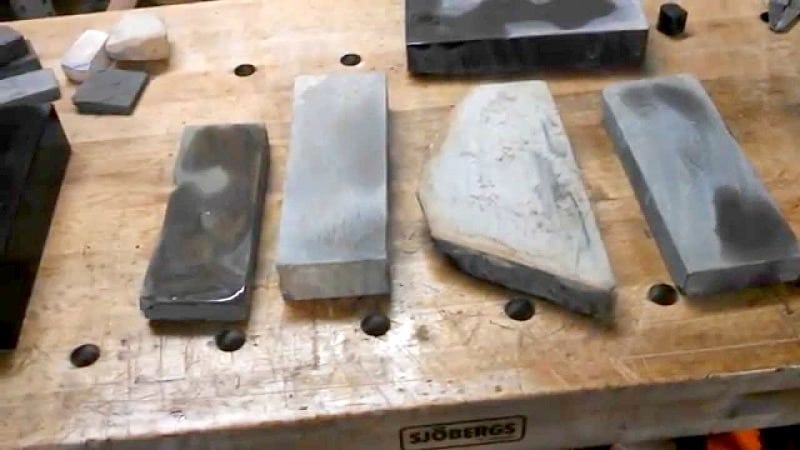
On the other hand, natural stones have very fine grains and are good for razor-sharp edges. Most sharpening stones have one coarse and one face. These stones come with different grit sizes. There are three grit sizes, which include: 200-800 grit; 800-1500 grit; and 1500+ grit.
Grinder
Grinders are mechanical sharpening tools which allow you to reshape, form, as well as sharpen your knife. A grinder is made up of an abrasive wheel mounted on a rotatable shaft. The abrasive wheels are found in different degrees of coarseness with respect to the blade material.
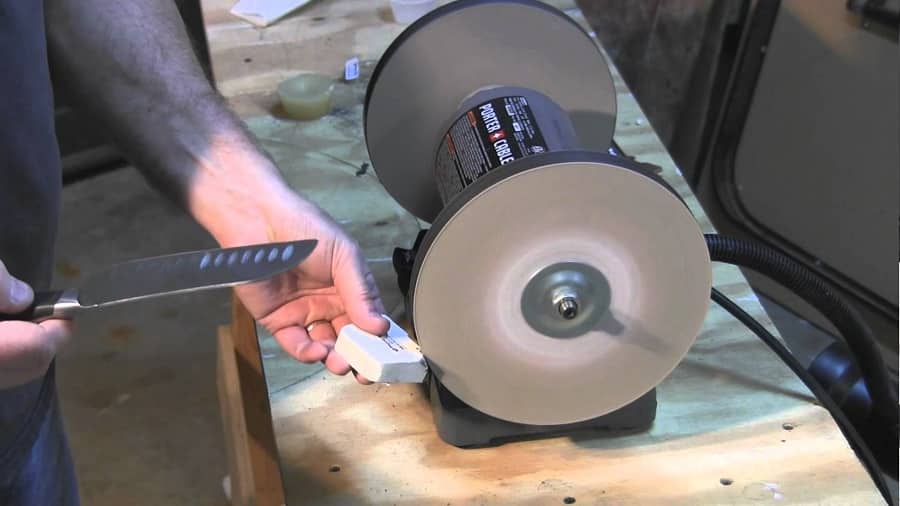
The most recommended grinder is a bench grinder, which consists of a clamp, a rest, an abrasive wheel, a hand crank, and an encased gearing assembly.
Check out our piece on how to choose the best knife sharpener to learn more.
The Principles of Sharpening
- Sharpen your pocket knife at the first sign of dullness.
- Select a proper sterilized sharpening stone/ grinder of fitting shape and abrasiveness.
- Establish the suitable angle between sharpening stone and the surface of your blade.
- Always maintain a stable strong grasp of both knife and sharpening stone.
- Avoid excessive pressure when sharpening.
- Make the sharpening stroke by moving your knife towards and not away from you, this will minimize poor edge.
- Do not overheat your blade during sharpening; lubricate the stone to avoid overheating.
How to Sharpen A Pocket Blade with A Sharpening Stone
This is the best way to sharpen a pocket knife.
- Step 1: Choose the appropriate stone.The best stone to use should measure 6 by 2 by 1 inches. There are several stones to choose from, such as whetstone, ceramic stone, diamond stone, and bench stone.
These are the hardest stones which will easily and quickly sharpen your blade. You need to choose a stone with respect to your budget; for instance, diamond stones are quite expensive. - Step 2: Lubricate the stone. A ceramic or whetstone requires you to soak in water for a given period of time before use. You can use a mineral oil as a lubricant.
Lubrication helps to prevent clogging with grit and filings. In addition, it minimizes the heat which is produced by the friction produced when rubbing the blade against the sharpening stone.
You can also lubricate a ceramic or whetstone with machine or sharpening oil. - Step 3: Determine the bevel angle of the cutting edge. Well-known as rough grind angle, the bevel angle is associated with honing of the blade to suit its intended purpose.
A great number of pocket knives are fitted with a beveled edge that ranges from 25 to 30 degrees. The angle is important when sharpening. It is easy to get confused about blade angles. Some manufacturers quote the total angle instead of the bevel angle.
Any big difference that you will observe will be a result of the quoted angle being too high. Bevel angle is usually measured from the centerline of the cutting edge. However, some equipment measure bevel angle from one blade side to the other.
The difference may reach five degrees from the angle measured from the centerline. The prominence of knowing the exact angle has been overstated. Pocket knives are functional through a range of angles.
The essential thing is to regulate the angle in order not to end up with an untidy rounded over edge.
A good beginning point is to replicate the original angle the manufacturer put on the blade. You should consider using a smaller angle to resharpen the blade if the knife does not cut properly after sharpening. - Step 4: Position the edge at the desired angle. Once you have established the correct angle, position the edge with respect to the angle. Maintain your folder’s position with the cutting edge facing away from you at the edge angle you have established against the sharpening stone.
You should know that maintaining a similar position for an extended period of time can be exhausting. If this proves to be a challenge, then you should consider purchasing a sharpening guide.
What the guide does is hold the blade at a steady position for the desired time. The only major flaw of a guide is that it is inconvenient for the curved blade. - Step 5: Slip the knife along the sharpening stone. Slip the blade along the sharpening stone. Do this repeatedly until you achieve the desired sharpness. You need to be careful when doing this because you can easily damage the blade. Avoid using shorter stones.
Sharpen the corresponding side of the edge by flipping the knife and drawing the edge across and off the sharpening stone. Do not forget to maintain the angle.
You should do this for a considerable number of times until you obtain a sharp edge. - Step 6: Test the blade for sharpness. This is a very important stage of sharpening a folder.
Take a piece of paper and hold it up, then use the knife to cut through the paper. If the blade is sharp, then it should cut through without much ado.
How to Sharpen a Pocket Blade with a Grinder
- Step 1: Wet the grinding wheel with oil.
- Step 2: Hold your knife in one hand with the blade at a 25 to 30-degree angle to the wheel.
- Step 3: Turn the wheel with your other hand or pedal with your feet; then draw the knife slowly across the moving wheel.
- Step 4: Avoid grinding the blade farther backward than the 1/4-inch bevel.
Note: As you are grinding, check both sides of your blade all along the length. Normally, the burr will form quickly at the base of the cutting edge but takes longer at the tip. To have fully ground one side of the blade, you must feel a burr running all the way from the heel of the blade near the handle to the tip. See more tips on how to sharpen your blade by reading our article on this important topic.
Grinding
You will observe some differences between a folder that is sharpened with a stone and one that is grinded. Mostly, grinding gives the edge its thinness, and will get rid of some parts of the edge. Therefore, you have to be cautious with any grinding in order not to lose more of the cutting edge. Only use a grinder if you are an expert in knife grinding.
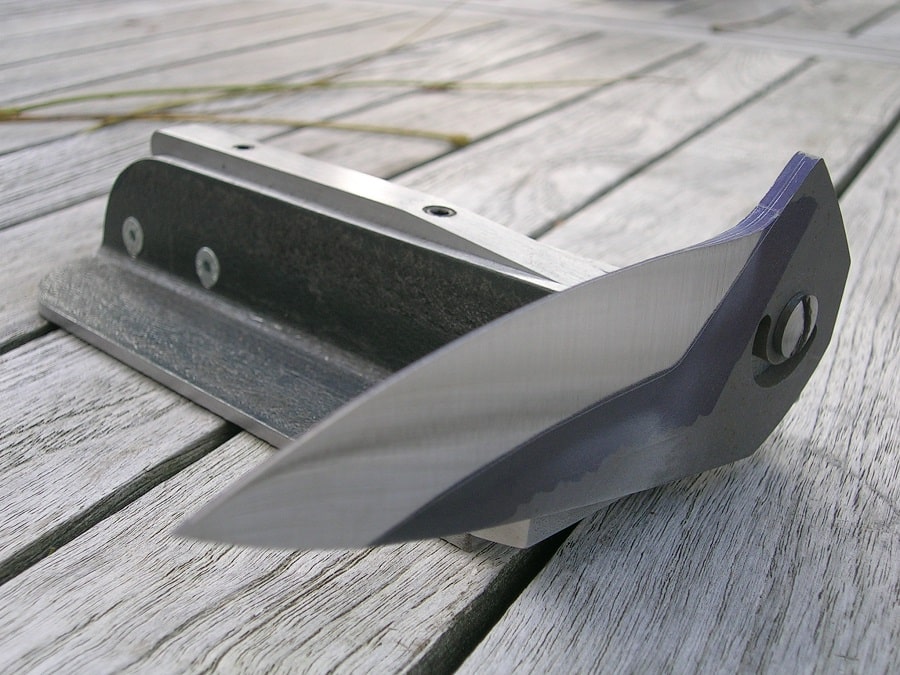
Some pieces need to be ground before they can be sharpened or honed. One of the best aspects of grinding is that it produces a beveled edge on the blade.
Usually, you will need grinding when you need to create a good angle that you can hone to your desired sharpness.
You do not necessarily have to use a grinding wheel; you can use a spinning round stone. Avoid power-driven grinding wheels because there is the possibility of creating too much heat from the abrasion of the wheel. Normally, the excess heat can cause the temper on your knife’s blade to burn. The trick is simple; just grind the knife slowly and in stages.
Honing & Steeling
Honing improves the condition of the beveled edge. This process requires a stone with a finer sharpening surface after grinding. Normally, the stone has to be in a stationary position during honing. It is absolutely necessary to keep your honing stone motionless when applying pressure. You can obtain a smoother edge by using an even finer stone, such as Arkansas stone.
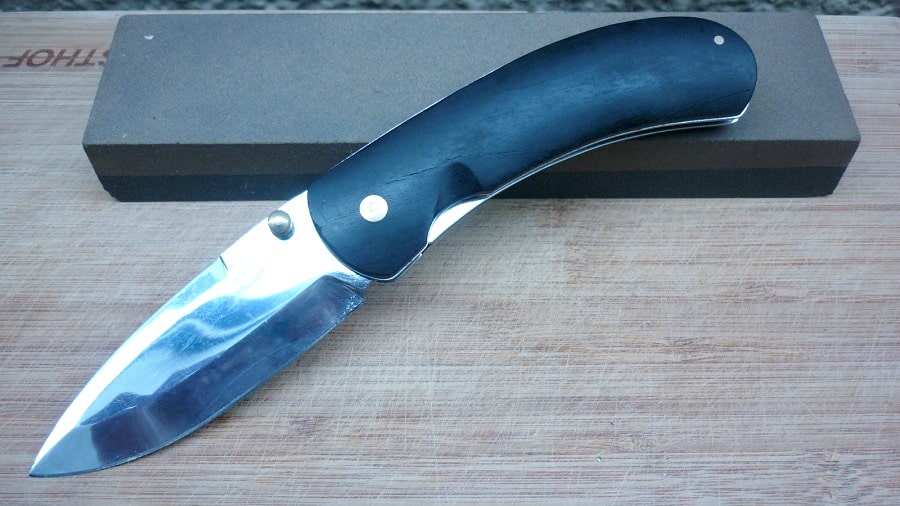
This should remove the remaining metal from your blade. This will sharpen the edge by smoothing out microscopic folds and creases on the edge. You should avoid hard Arkansas stone when honing. Use this stone when sharpening. Honing will provide you with a razor sharp edge that can shave dry hairs from your forearm.
Honing has to be followed with steeling. This is a necessary stage after sharpening, grinding or honing. Steeling makes the cutting edge flawlessly straight by getting rid of any burrs in order for the burrs not to roll over on themselves, making cutting difficult. Steel will effectively straighten the edge, forcing any rolled-over spots back in line.
How to Hone A Pocket Knife
- Step 1: Use oil or water to wet the honing stone, and place the blade firmly on a flat surface.
- Step 2: Hold the handle, and then place the end of the blade closest to the handle near the edge of the honing stone closest to you.
- Step 3: Tilt the blade so as it lies flat on the surface, making a desired edge angle.
- Step 4: Place your fingertips on the flat side of the cutting edge, close the back, unsharpened edge.
- Step 5: Use your fingertips to apply pressure on the blade.
- Step 6: Draw the knife across the stone in one direction with a sweeping motion, then turn it and draw it in the opposite direction.
Cleaning Your Knife
It is absolutely necessary to clean your knife after use and after sharpening. Use a compressor to blow out the inside of your knife to get rid of pocket dust. However, you can alternatively use a toothpick with cotton if you do not have compressed air.
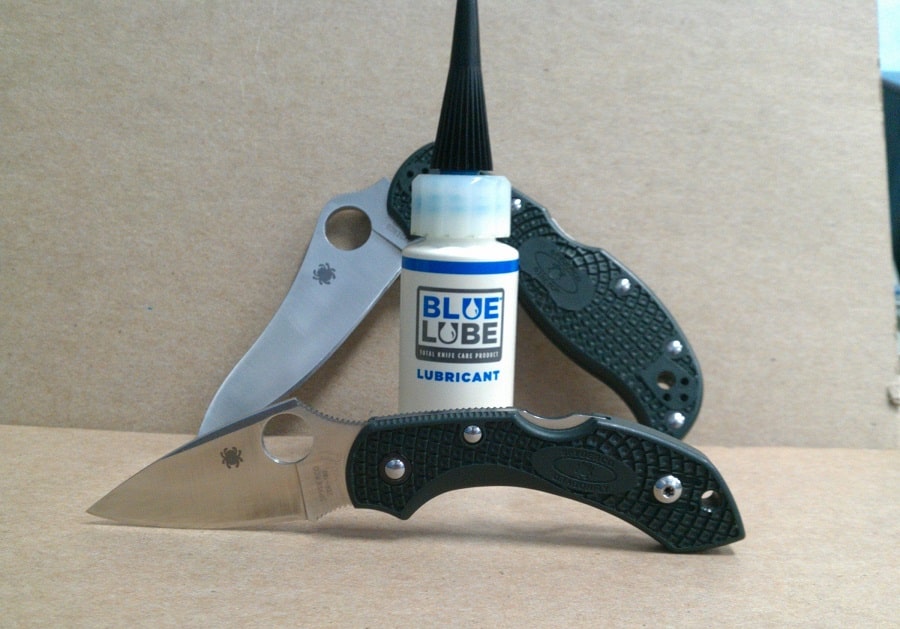
Always rinse your knife under clear water if it has blood, mud or any other stain. At all times test your blade for sharpness after cleaning.
In Conclusion
You should now be able to sharpen your pocket knife without any problems. However, you have to be mindful of each and every piece of information provided in this article. How effective you can sharpen your knife does entirely depend on the blade material.
There are some steel blades that are easier to sharpen and maintain than others. You can opt to create a sharper edge with a stone or grind, hone, and steel the blade.
In addition, remember to check the blade’s sharpness regularly, which can simply involve fine-tuning and not necessarily sharpening or grinding. Do you think we have missed any important sharpening tips? If so, inform us in comments. For the best knife sharpeners, see our reviews on these tools for more details.


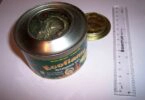

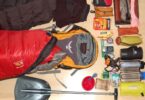
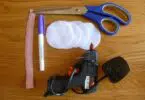
My tip would be to practice sharpening with a cheap, throwaway knife to help you get the basic stroke down before you practice with your more expensive knives. After each practice, check how much you sharpened the knife by testing it on a tomato or carrot. By practicing you will eventually learn how to get your knives to their ideal sharpness.
You can also check out the Tormek Sharpening System. It’s expensive but it’s worth it if you really work with knives or passionate about them. You can measure what angle you want in a knife and this machine will do the sharpening in seconds with extreme accuracy.This knife sharpener can create a whole new edge angle on your knife and make it razor sharp. Since this system is water-cooled, it helps keep the blade tempered and your hands blister-free.
Always remember that the best sharpener is one that is foolproof, durable, has adjustable angle, and works well with your knife’s blade steel.
Knife sharpening is a skill that you must develop, one step at a time. Therefore, learning the basics is absolutely important.